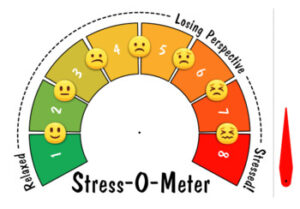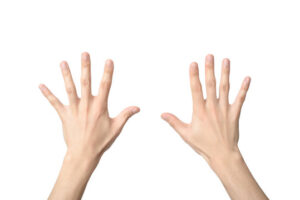
I read an interesting article on Substack the other day that argued even though we lament suffering, there’s something in us inexplicably drawn to it.
Suffering is my bread and butter, and something I ponder frequently, both my own suffering and that of others. There may indeed be a part of our suffering to which we unconsciously cling to, who knows. This isn’t a conscious choice however, otherwise we would just stop doing it once it was insightfully pointed out out to us by our minds, or someone else, so maybe it is rather a manifestation of our unique personality style or “ego cage”. Each personality has its own mode of suffering that it’s drawn to or can’t detach from. Sometimes we may even transition from one stressful “ego cage” to another if we’re undergoing considerable suffering or di-stress.
 Another perspective on suffering is that it profoundly impacts our ability to be “present” (to ourselves, others, and the world). The term ‘presence’ is often employed by psycho-spiritual aficionados in a somewhat mystical manner, but its essence is straightforward. My definition of presence is as follows:
Another perspective on suffering is that it profoundly impacts our ability to be “present” (to ourselves, others, and the world). The term ‘presence’ is often employed by psycho-spiritual aficionados in a somewhat mystical manner, but its essence is straightforward. My definition of presence is as follows:
Presence is the state of being fully engaged and aware in the current moment, unencumbered by distracting thoughts, unpleasant physical sensations, or emotional states.
In essence, this is mindfulness, but I think that mindfulness suggests a kind of striving, whereas presence feels more achievable and “chill”. Also a lot more fun. Is this not also a definition of flow, of peace, of happiness?
Suffering extricates us from presence by substituting our more holistic, integrated self with a reduced and suffering self that operates primarily within the rigid bounds of fight, flight, or freeze. All the stress responses suck (even fawn), but primarily because these very primitive responses were not designed for the stuff that now triggers them. Constantly.
When we’re triggered, we lose some, if not all presence, as well as agency, leaving us feeling disempowered and reactive. This is also a definition of unhappiness.
Imagine a computer running only in Safe Mode, a library stripped of all but one genre, a car limited to first gear, a smartphone restricted to basic calling and texting, or a painter confined to a single colour. These analogies all illustrate systems forced to operate in a diminished capacity, sacrificing their holistic functionality for a more limited, constrained mode of operation.
Let’s now have a think about your internal ‘stress-o-meter,’ perhaps akin to a dial ranging from 0 to 10. This gauge is also closely related to what psychologists call the SUDS scale, which stands for ‘Subjective Units of Distress.’ On this scale, numbers from 0 to 5 represent you in a fully functional, relaxed mode. The upper half of the dial, ranging from 6 to 10, signifies an escalating state of distress. This begins with unease or discomfort and climbs to extreme manifestations like panic attacks or thoughts of suicide. A reading of 0 indicates no distress—essentially a state of happiness and peace—whereas a reading of 10 represents the most severe distress you could possibly ever feel as this strange, hybrid human-animal that you/we are.
HOW ARE YOU FEELING RIGHT NOW?

If you’re approaching your crossover point, where presence dissolves into disengagement or heightened anxiety, you might want to try this following “hands-on” approach, which actually uses both hands and all 10 fingers externally, but also internally in a bid to nudge our inner suffering/stress dial back into a more comfortable and functional state of presence.
Have a listen to the audio above, or try it out, following the instructions below.
(Notice that apart from the “Presence Pinkies” on each hand, all the instructions on the Left Hand begin with S, and all the instructions on the Right Hand begin with R so as to make them easier to remember and apply)

PINKY => PRESENCE: Start with your left hand, left pinky, which stands for Presence. Without Presence, initiating the process is impossible. This foundational step allows you to become aware of your current emotional or mental state, setting the stage for the journey ahead.
To become present, take a deep breath and exhale slowly. Focus on the sensation of the breath entering and leaving your nostrils. This simple act anchors us in the present moment.
L-RING FINGER => SEE IT: While focusing on your left ring finger, pause and take a deep breath. What’s actually going on for you right now. Where are you suffering? Emotionally, mentally, in an embodied way, or in a combined, intersectional overwhelm? You might even want to bring to mind those six core negative emotions (SAAAAD: Sad, Anxious, Alone, Ashamed, Angry, Don’t-Want/Dislike) and identify which one or two you’re feeling mostly right now. As you do this, consciously invite your inner One True Friend to join you, that part of yourself that would reach out to another if their distress mirrored yours, and now take few deep breaths to cultivate just 10% more lovingkindness towards yourself. Go away Inner Critic, let’s just be kind as we acknowledge exactly how we’re feeling.
L-MIDDLE FINGER => SAY IT: Upon touching your left middle finger, inhale deeply and then gently utter your emotional state out loud or mentally, saying something like, “I am feeling anxious,” or even more simply: “I’m feeling upset and stressed”. Or: “I’m not coping with myself at the moment.” Whatever states it simple but authentic. The act of verbalising helps us dis-identify or distance ourselves a bit from the emotion. This is a good form of mental flight if you like. Take a few more breaths, allowing each exhale to release this identified state just a bit.
L-INDEX FINGER => SENSE IT: As you focus on your left index finger, close your eyes for a moment. Scan your body from head to toe, noting any tension or discomfort that corresponds with your current emotional or mental state. Inhale deeply into these areas, again imagining yourself loosening them a little with each exhalation. As if they were helium balloons filled with lead, and every breath, every sensed breath, allowing you to release those lead-filled helium balloons, to let them float away.
L-THUMB => STAY WITH IT:When you reach your left thumb, try to to sustain your attention on these bodily sensations, continuing to breathe into them. If deeper emotions begin to emerge, consider extending your breaths, both on the inhale and exhale. In doing so, you’re not subjecting yourself to further distress by ‘staying with it’; rather, you’re granting yourself the compassion and presence needed to more fully understand your inner, stressy landscape and emerge from it with enhanced self-control and beatific presence.
R-THUMB => RELAX: As you transition to your right thumb, you might like to exhale deeply, releasing any stored tension. In this moment, consider the idea of surrendering. Surrender doesn’t mean defeat or passivity, but a conscious choice to stop resisting, stop fighting whatever it is that we’re currently experiencing. To surrender is to allow our sensations and emotions to just be, without assigning them labels of ‘good’, ‘bad’, like dislike. Imagine your resistance to this suffering as a clenched fist, and each exhale as a tiny gesture towards the opening of that fist, a letting go. You may also find it helpful to say something like: “It’s okay to feel this” or “I release control in this moment”; “I accept what is”.
R-INDEX FINGER => RESPIRE: On reaching your right index finger, deliberately focus on your breathing pattern. Take a few cycles of deep inhalation and full exhalation, perhaps adopting a specific breathing technique like 4-7-8 breathing for additional calm.
R-MIDDLE FINGER => RECONNECT: As you shift your focus to your right middle finger, we’re going to expand our sensory awareness a bit more broadly. If your eyes were closed, consider gently opening them. Begin to notice the room around you, taking in its colours, shapes, and any sounds that you can hear. You might also like to focus on tactile sensations—perhaps the feel of the chair beneath you or the air against your skin. In doing this, we’re not just reconnecting with our environment but also grounding ourselves safely, safely in the present moment. This expansion of our senses can hopefully now offer a kind of resting place away from those narrow, stressful thought patterns, hopefully also enhancing just a tad our overall sense of clarity and presence.
R-RING FINGER => REFRAME or REFORMULATE: As your attention settles on your right ring finger, let’s go big but also flexible, a flexi-maxi expansive view of your initial emotional, physical, and mental state. Take a few moments to think of the most skillful actions that you could take right now that might help you maintain or even deepen this connection to presence and divert you further away from stress.
This could be an moment to engage in some physical movement or exercise. Alternatively, you might like to experiment with some state-shifting techniques such as Wim Hof breathing for 10 minutes. Or you might at this point need another CTRL+ALT DELETE brake for your trauma/fight-flight stress response: 10 minutes of self-applied vagal nerve stimulation perhaps, or even some cold-exposure, which doesn’t necessarily have to be a cold swim or shower, but could be).
Another enriching option might be to delve into a deeper inner dialogue with yourself, maybe even speaking to your self about what’s going on, aloud, with either a therapist, and/or with your inner One True Friend–genuinely creating a short dialogue out of this communication, either in your mind, on paper, or using your voice.
R-PINKY => PRESENCE: Lastly, we let your right pinky serve as a reminder to return, if possible, to an even more profound state of heightened awareness. Taking a final deep inhale and a slow exhale, coming back to your centre. Recognising this moment as a foundation for future encounters with our emotional or mental states, reaffirming this capacity for restoring presence. This would even be a great time if you’re feeling more settled and can give yourself another 10 minutes, is to just stay where you are and drop into 10 minutes of gentle, sensations, sound or body-focused meditation.
Hopefully approach doesn’t just help us manage suffering but also taps into our built-in ability, the ability of an animal-human to find peace, to be present, and (this is the human part) to understand ourselves with a bit more compassion.
—
Left Hand: Understanding and Acknowledging
-
Pinky: Presence
- Become aware of your emotional and mental state.
- Take a deep breath and focus on the sensation to anchor in the present.
-
Ring Finger: See It
- Identify where you’re suffering (e.g., SAAAAD emotions).
- Invite your inner One True Friend and cultivate lovingkindness.
-
Middle Finger: Say It
- Verbalise your emotional state aloud or mentally.
- Creates distance from the emotion.
-
Index Finger: Sense It
- Scan your body for tension or discomfort.
- Use breath to release tension.
-
Thumb: Stay With It
- Sustain attention on bodily sensations.
- Extend breaths if deeper emotions emerge.
Right Hand: Managing and Releasing
-
Thumb: Relax
- Exhale deeply, release tension.
- Surrender resistance, accept what is.
-
Index Finger: Respire
- Focus on breathing pattern.
- Utilise techniques like 4-7-8 breathing.
-
Middle Finger: Reconnect
- Expand sensory awareness.
- Reconnect with environment for grounding.
-
Ring Finger: Reframe or Reformulate
- Reconsider your initial state.
- Explore skillful actions or techniques (e.g., Wim Hof breathing).
-
Pinky: Presence (Again)
- Return to heightened awareness.
- Use this as a foundation for future emotional encounters.
—
Want to try another practice like this?
How about: The Four-Minute Rescue Remedy.
